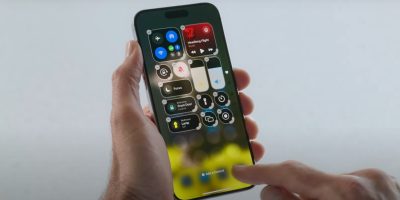With the roll-out of AT&T’s nationwide 3G network, mobile enthusiasts are excited about the increased potential for mobile applications and web browsing due to drastically improved network speeds. While 3G enabled handsets are kicking off in a big way, carriers are already looking to the next generation of mobile.
Lets take an extremely abbreviated look at the main technologies playing into American carriers today to get everybody “up to speed”. We’re currently living in a mostly 2G world with two general schools of technology – GSM and CDMA.
GSM is the most widely used technology, the standard in over 210 countries and used by American carriers AT&T and T-Mobile. These devices have SIM (subscriber identity module) Cards which allows a sense of openness. Put your SIM card into any GSM enabled device and it will work. That’s the process behind all these “unlocked phones” you hear about on the market.
Verizon Wireless and Sprint work on a technology called CDMA. The technology allows for slightly quicker upstream and downstream data transfer compared to GSM with the downfall being it isn’t as open as its SIM Card counterpart.
Both of the technologies are 2G (2nd Generation) because they are digital as opposed to analog which typifies 1G devices. Instead of a straight leap to 3G technologies, each carrier has a transitional technology called 2.5G which are basically upgrades to their existing infrastructure that make speeds quicker. The GSM based AT&T and T-Mobile 2.5G network is called EDGE while the Verizon and Sprint CDMA counterpart is 1XRTT.
But all of that is soon to be history because 3G is ushering in a new era. The 3G technology for the CDMA-based Verizon and Sprint network is called EV-DO while AT&T and T-Mobile have the GSM version of 3G known as HSPA.
Any electronic buff knows how quickly the technology world moves… it seems like shortly after their computers, laptops, iPods and other gadgets get up and running they just as quickly become obsolete. So you might be interested to know that while 3G network speeds are all the rage, carriers have their eye on 4G technology sure to render your 3G device pathetic in the near future.
And if Clearwire has anything to say about it, your 3G device will be pathetic sooner rather than later. Clearwire, who recently worked out an agreement with the likes of Sprint, Google, Timecast, Time Warner and Brighthouse to pioneer the 4G WiMax technology, still faces FCC approval for the to-be-created merger to be named New Clearwire.
Considering the terms outlined by New Clearwire in document filed with the FCC, there’s virtually no way the move will be blocked. Lets take a look at some of the more interesting promises:
- “New Clearwire will permit consumers to use any lawful device that they want so long as it is compatible with and not harmful to the WiMAX network”
- “New Clearwire also will permit consumers to download and use any software applications, content, or services they desire, subject only to reasonable network management practices and law enforcement and public safety considerations”
- “New Clearwire will offer non-exclusive wholesale access to its network”
- “New Clear wire will deploy an advanced mobile WiMAX broadband network that will cover up to 140 million people in the United States in 30 months”
In a private pitch to investors, Clearwire projected it would cover 140 million people by the end of 2010 and up to 220 million people by 2017. And while these are coverage and not subscription numbers, the numbers themselves are HUGE.
The verbage of the FDD document goes hand-in-hand with what Google was seeking in the 700MHz auction. Verizon Wireless won the auction, Google successfully lifted the price above a specified threshold, and the FCC is supposed to hold Verizon to the duty of providing an “open” network that is accessible to all devices. Similar to what Clearwire outlines above.
Google has been suspicious of Verizon’s responsibility to maintain an open network and even filed requests and pleas to the FCC suggesting Verizon declare their intentions. With Clearwire’s WiMax network, Google would get what they want WITHOUT being at the mercy of VZW.
WiMax isn’t limited to mobile. The “wholesale access” outlined above would allow companies like Time Warner and Comcast to package in Clearwire’s WiMax service with their own bundles, offering a one-stop-shop for what some are calling the “quadruple play”: Voice, Video, Data and Wireless.
And just for the fun of it, we can’t help but mention the possibility that Google could actually offer wireless service through a wholesale agreement with Clearwire. They are financially invested in the company… so why not? Could Google help the dream of free phone service come true? Just buy a basic gPhone that would come with free calls and free internet every month up to a certain amount. The price would be subsidized through advertising on the phone.
We can dream… but chances are it won’t happen. At least, not in the forseeable future. We do love the idea though! It’s more likely that they’ll follow the intent outlined in the FCC document which is to develop: “novel Internet applications and services for WiMAX devices operating over the New Clearwire and other WiMAX broadband networks.”
Great, so by the end of 2010 4G will be well on its way and we’ll want to ditch our current handset for the first ever WiMax enabled 4G device, right? Not so fast… what about LTE?
LTE stands for Long-Term Evolution and is the GSM-based 4G technology adopted by the likes of AT&T and Verizon, moving forward. While Verizon currently has a CDMA based network they’ll add the GSM-based LTE technology IN ADDITION to their existing framework. Verizon has already publicy announced that their new 700MHz spectrum space will go towards supporting the 4G LTE technology. Not only that… but it will be made available in 2010 and on a mass scale by 2012.
Uhoh… looks like some head buttins gonna go down. Most would claim that LTE is the favorite here, especially considering the country’s two biggest wireless carriers have put their full fledged support behind the technology. Sprint stumbled with their XOHM branded version of WiMax but hopefully the newly formed Clearwire will get off the ground quickly.
Competition is good… and so is openness. Failure of WiMax would lead to less consumer choice and less product/service differentiation. And of course, with less competition in the marketplace the LTE service providers would feel less pressure on prices as well.
So while you sit there with warm and cozy 3G feelings inside, you should know that the next step isn’t far behind. Whether it will be WiMax or LTE that holds the 4G torch… nobody can know for sure… but the fact the next generation is only a few years away is reason for excitement.
[Sources: Gizmodo, MocoNews, ArsTechnica]










So is WiMax – GSM or CDMA?
Any CDMA equivalent for 4G?